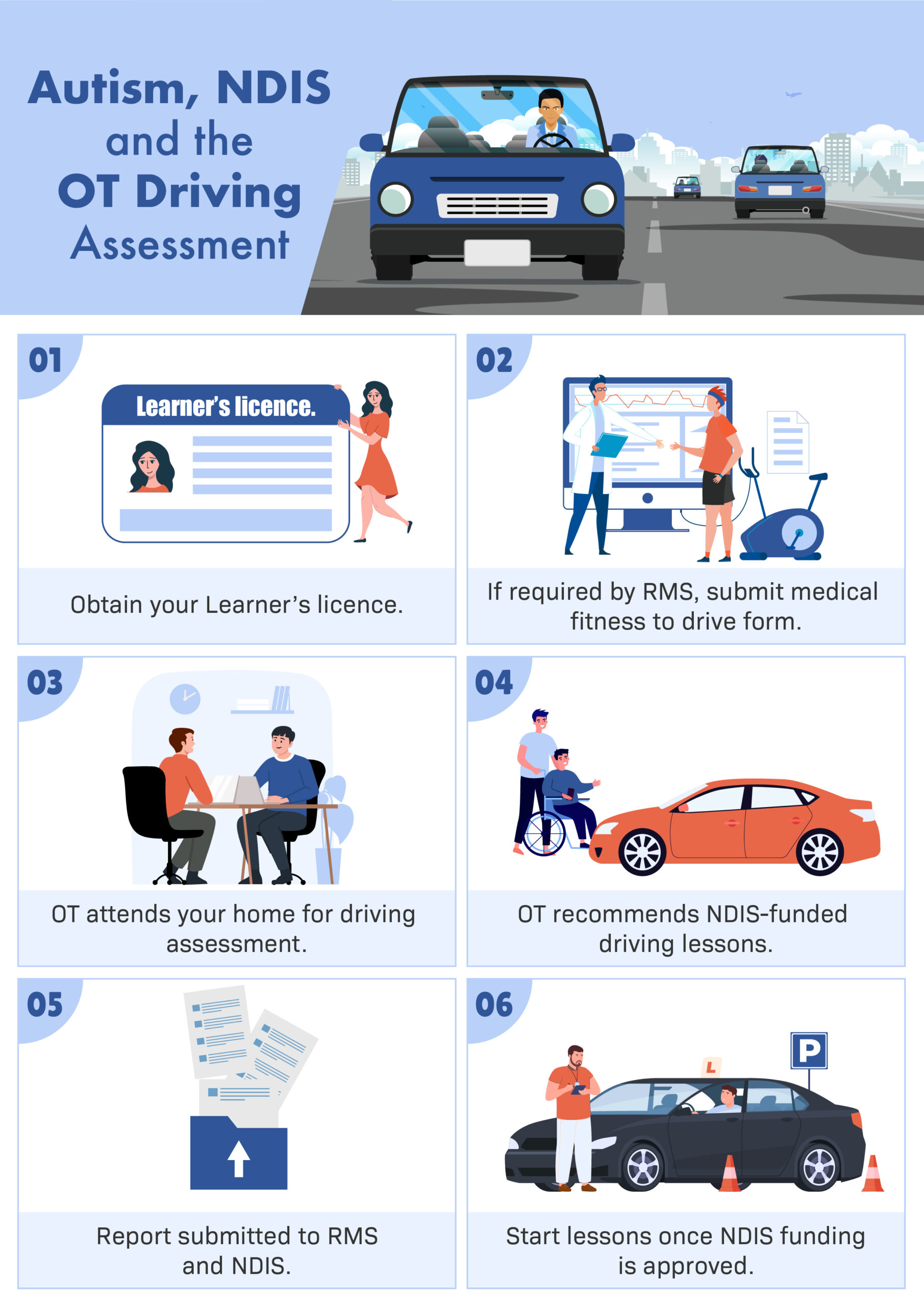Are you or a loved one with autism interested in learning to drive? As a driver trained occupational therapist (OT), I understand the importance of navigating the world on your own terms.
Let’s address the question that is on many minds: Can individuals with autism drive?
The short answer is: Yes! Many people with autism learn to drive and successfully obtain their licence. However, it is common for people with autism to take longer to get their licence than others their age. Let’s dig a little deeper.
Driving is a complex task that requires a combination of cognitive, perceptual, and motor skills. While autism spectrum disorder (ASD) often affects social interaction, communication, and behaviour, it does not automatically preclude individuals from driving. It is crucial to recognising that each person with autism is unique, with varying strengths and challenges that can impact their driving ability.

Factors to Consider
1. Sensory Sensitivities
Many people with autism experience heightened sensory sensitivities or have sensory regulation difficulties. Bright lights, loud noises, busy environments, or unexpected movements can be overwhelming. Moreover, these situations can potentially affect attention and concentration while driving. However, strategies may be developed to help manage sensory challenges and create a more comfortable driving environment for the person.
2. Social Communication
Difficulties with social communication and understanding non-verbal cues may impact driving safety. Interpreting or anticipating the intentions of other drivers, recognising and responding to road signs and hazards, and effectively communicating with law enforcement or emergency personnel are crucial aspects of driving.
3. Executive Functioning
Executive functioning skills include planning, organisation, processing, decision-making, and impulse control. Challenges in these areas may affect an individual’s ability to anticipate hazards, make timely judgments and decisions, or adapt to ever-changing traffic conditions.
4. Motor Skills
Fine motor skills, coordination, and visual-motor integration are essential for safe driving. Deficits in these areas may impact tasks such as steering, braking, and ability to coordinate several tasks at once (e.g. completing lane changes).
Assessment and Support
Once the person with autism has their learner (LRN) licence, an OT driving assessment may help them prepare to drive. This assessment evaluates an individual’s unique abilities and challenges, incorporating clinical evaluations, an on-road driving assessment, and liaison with family members or carers.
After the assessment, personalised interventions can be designed focusing on specific areas of need. The driver trained OT also develops a driving lesson plan for the person, usually involving a graded approach to lessons, i.e., commencing in light traffic conditions then progressing to moderate and complex traffic as the person’s skills improve.
Conclusion
Driving can be a significant milestone of independence and freedom for people with autism. While certain characteristics associated with autism may pose challenges, individuals are unique, and each person will have different abilities. Through comprehensive assessments, targeted interventions, and adaptive strategies, people with autism can become safe and competent drivers.
Take the first step towards driving independence today.
Learn more about our NDIS driving assessments.
Contact us today to get started.



